Note: This is a review-like reminder of great games of old, as I have experienced them in the past and how they grew on me over the years. There may be minor spoilers.
I remember well my first contact with Suikoden II, which was also my first contact with the franchise in general. A friend of mine was excited about this one game his father randomly bought him and when he showed me I wasn’t really impressed. It was in japanese, the graphics were very SNES-like in comparison to the awesomeness of Legend of Legaia and Final Fantasy VIII, and I wasn’t really paying attention to it. It vanished from my memory for nearly half-dozen years before I decided to play it through, in english, of course.
Yeah. I must ask forgiveness to the RPG gods because of such heresy.
Suikoden II caught me quickly, embraced me with its fast-paced start which was completely contrary to most RPGs by then, and it slowly showed me it held much more beneath its numerous cast. It began as a tale of friendship, of people trying to escape an incoming war where they were powerless. It began as a sad drama where the trio of friends: Riou, Jowy, and Nanami were forced to make tough decisions and live by it. And it changed.
Suikoden II is a masterpiece of storytelling. It blew my mind as friends took divergent paths, as the war consumed the land and all I could do was watch Riou being thrown from city to city in search for a respite. He became an errand boy to a cause he did not know, he tried to find a safe house for his friends, yet nothing ever worked. However, as he ran from the forces pursuing him, he became the beacon of hope for many people, a survivor ready to give a push to a resistance, a rebel, a hero. Riou is, in my opinion, an example of the best use of a silent protagonist. His charming sprites give away what he thinks, you sometimes make tough choices for him, yet he feels as his own person. It’s a weird combination of making you stand in his shoes but also watch him progress with his very own personality.
I haven’t found such amazing storytelling since then. I’ve played a lot of RPGs, CRPGs, JRPGs, adventure games, and whatever else fueled by great tales, but none got from me the same awe I had with Suikoden II. No other game held a personal tale with a world that made me truly wish for more. Not more Suikoden II though, more Suikoden. It is not as if I want more Riou after the credits roll, what this makes is giving me inspiration to see other tales, other wars, other nations, other people. It teases you at many points about how big and vast the world is, yet your concern is not saving it from doom, but just protecting this tiny piece of beloved land from the ravaging of war. After you finish this war, you end up wanting to see others.
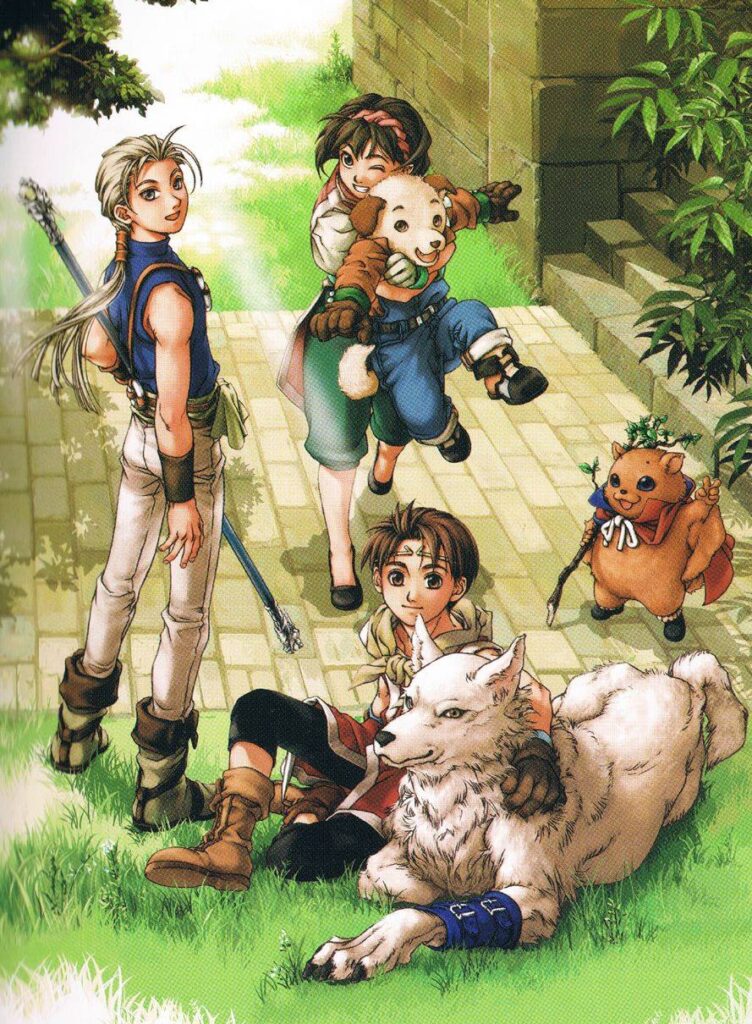
Beauty and Simplicity
Suikoden II is a simple game if you look into its mechanics. The heart of the combat is a classic turn-based drama where you can choose to attack, defend, use a rune, or do a team-attack if it is available. It works though, especially because you have a team of six people to tweak around and see what combination gives you more fun. This combat, however, is hardly how the entire experience ends up being about.
First, the SNES-era graphics are a charm. The care given to each sprite is amazing, with a multitude of tiny animations giving hints about what that specific character is thinking or how he or she is acting along with the conversation dialogue. It does not require fancy otaku-like big cardboards and it doesn’t even need to put facial expressions in the dialogue’s avatar. It works through its in-game graphics and this detailed effort oozes into every corner of the game, from combat to random NPCs going by their mundane lives inside the multiple cities and villages of the game.
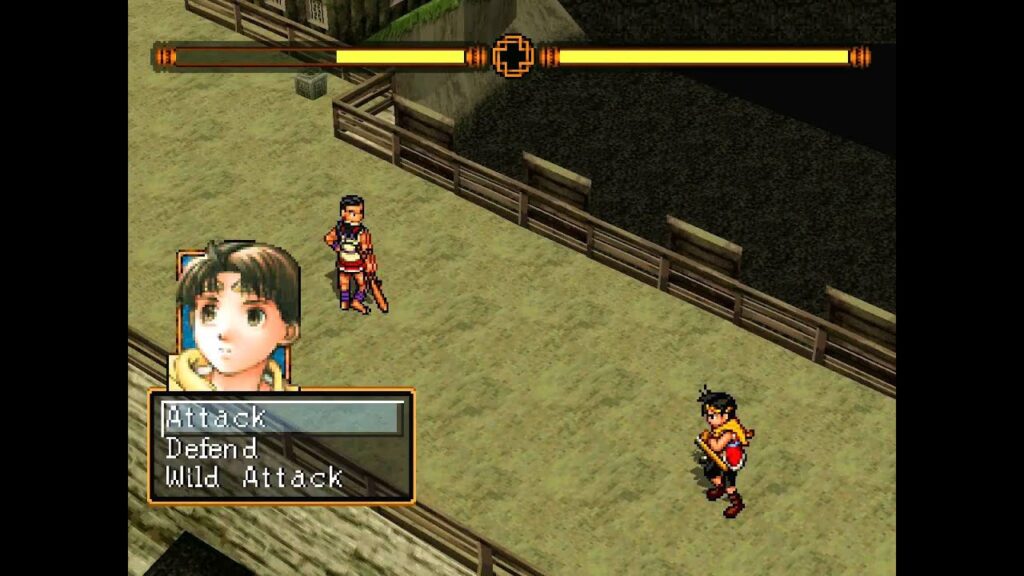
At very specific points, however, Suikoden II takes a twist. Warfare? Yeah, they built a system for it. A charming grid-based game, which is absurdly simple, but practical and challenging. This system is introduced to you slowly, putting Riou as a bystander at first and slowly giving you command over other units. You see, they could simply dump a “tutorial” and give you the reins, but that would ruin the sensation of power you have when you finally decide who will march into battle with you and how they will act. It is part of making Riou grow as a leader, as if he was a side-character in those first combats, surviving against odds, and with each battle he gained thrust, leadership, and respect.
There is more though. When things get personal, when Riou is challenged by someone, or when the circumstances would make you fight a single foe with five allies into a lack of honor, the game gives you yet another simple and efficient system: duels. This system is basically a rock-paper-scissors where you read a dialogue from your foe and choose between attack, defense, or counter-attack. Read his intentions and you beat him. Fail and he beats you. Once again, this makes for Riou to grow even more, as he beats these challenges by himself, proving he is a badass fighter and not simply a guy with a lot of powerful friends and a great war leader. Yeah. Damn you Riou. You are an amazing guy.
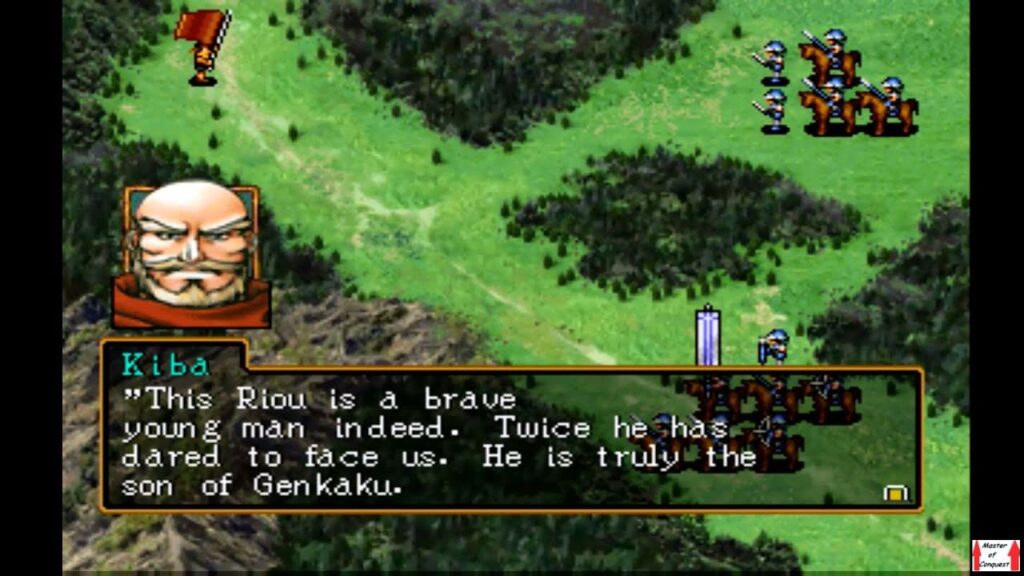
It is about war though
Riou is amazing, but he is just a single guy who can be killed at any moment. That’s where the reminder of the game comes to play. As a war leader, as a boy who grows into a beacon of hope, you get allies, loads and loads of them. The game boasts 108 recruitable characters and many more important people who fight alongside you or against you. These guys are the reason Riou survives, and they get together because of Riou. You see, during the first part of the game you never get to face the villain and lose like in any cliche’d tale, you just go around fleeing destruction, searching for a place to hide, and slowly getting into the trappings of warfare as you become a prominent member of a small rebel group.
When Riou is finally worthy of the enemy’s attention he already got himself a fucking castle and an entire army. Take that! There is no loose end here. Suikoden’s storytelling is not just random dungeons to explore, it’s got reason to progress the way it does and it unfolds in remarkable ways, especially when dealing with foreshadowing in this war.
For example, there is a time when you see a bunch of important people gathering together and discussing how to deal with Luca Blight, the Mad Prince. You are just there as a random rebel fighter, yet you know these guys are important. After that, at each major event you get to see them again, you get to understand the reasons they had to abandon their allies or to fight alongside them. You see those annoying knights again, tucked inside their fortress when the tide of war goes against them later in the game. You get to see much more about these people. Suikoden II is filled with that, it picks an important character, mentions him since the beginning, and when you finally meet or talk to him later you get that sensation that you are indeed talking to someone important. It is warfare shown by the eyes of a young boy at first and later as a leader and the hope of a region.
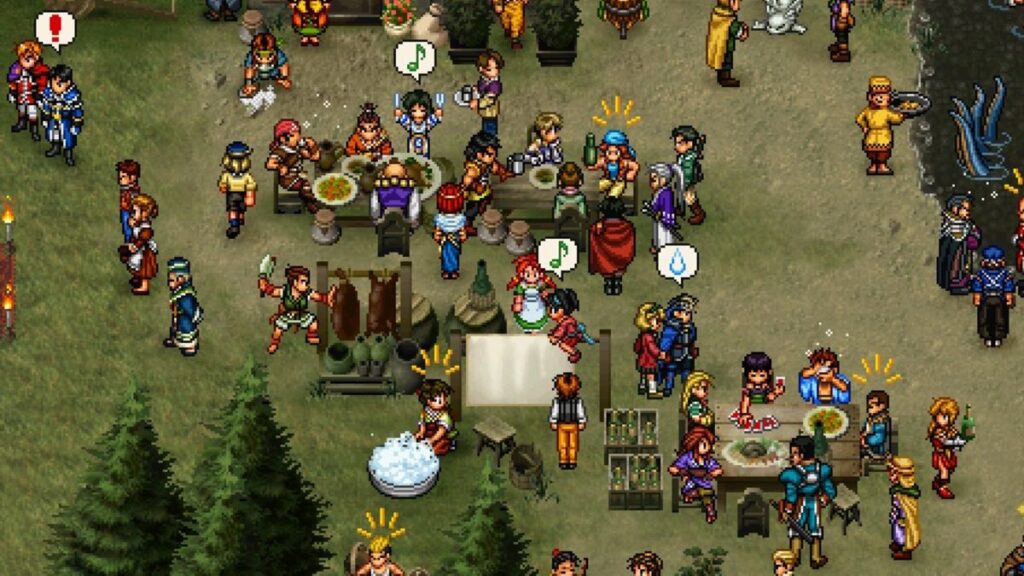
108 Allies
“Oh! You were kind enough to help these birds in their fallen nest! Let me fight to death alongside you!” Okay. There are a lot of filler characters here. The number 108 is simply massive. Plenty of guys just appear at one second and join you. Some require small side-missions before joining you. There are a few who are a massive hurdle to be acquired. Most of them, however, are given purpose after you get your colossal headquarters.
Some people sell items, others craft equipment, and there are guys who open entire new mini-games when you recruit them. Regardless of depth, these people make your headquarters feel alive, growing, and a true home to the rebel army you are building. You can run around and speak with them during your time home, hearing the thoughts about recent events or just learning about their quirks. Take in mind this is about 108 people. A hundred and eight fucking people going around. The headquarters alone is an experience that only other Suikoden games would mimic, yet it is Suikoden II where this experience is at its highest.
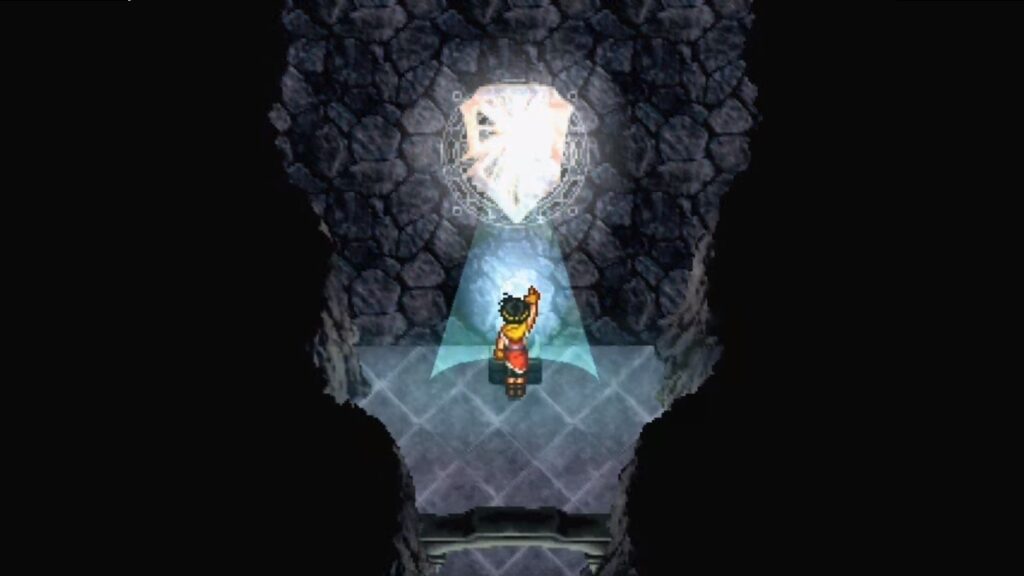
The True Runes
Riou is a simple orphan, raised by a regional hero and taught about friendship and family. Jowy is the son of a prominent household, a boy born with feet wet by nobility and royalty. They become best friends, but their realities are certainly not the same. When those two meet the True Rune of the Beginning, it becomes obvious that they must trace different paths in the chaos of war.
Riou is the beacon of hope for the oppressed, an icon to those who suffered in the hands of the Highland army. His tools for war, his path for victory, is urging the people to fight alongside him. Jowy is not like that, his view is from within, he thinks changes can be made inside the walls of castles and the institutions that gave birth to his lineage. His path is lurking in the shadows of the royalty, grasping for openings to rise in power and gain a position where the fate of the war is in his hands.
Riou is given the Bright Shield rune and Jowy is given the Black Sword rune, each a half of the True Rune of the Beginning. From there on, their paths will stray, their destinies clashing against each other. Riou is the shield of the people, a protector from oppression and cruelty. Jowy is the sharp sword of retribution, slashing his foes until no one else can stand in his way. This is their fight, and also the fight of the True Rune. Yeah, the god-like True Runes.
Every Suikoden game has them. They are mysterious entities, capable of choosing those who will carry them, commanding the destiny of those around them. Their power, however, is often followed by a curse. The True Rune of Beginning puts these two friends on clashing paths, even if they seek the same outcome.
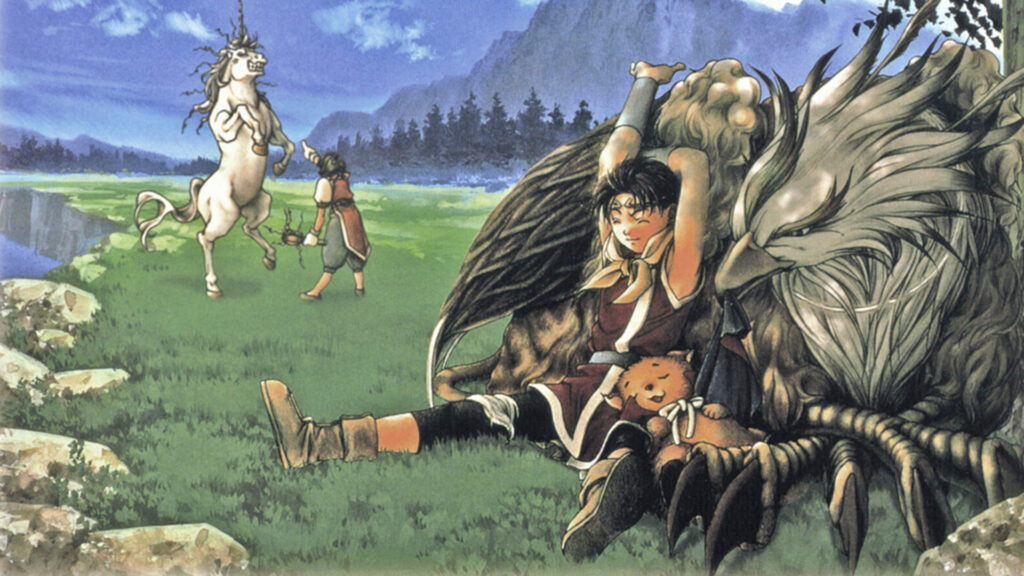
Overlooked Masterpiece
There is a lot going on around the lore of Suikoden. The game evolves with every new chapter, and it gets even more intriguing when the world is further improved with new games and spin-offs. There is rarely anything like this coming from japanese authors, especially when it involves medieval fantasy and teenage heroes. Suikoden is an outlier in the JRPG spectrum, it is fantasy, yes, but also a kind of fantasy that only saw a bit of competition during the SNES era. Suikoden II, in particular, stands tall among its piers, it is a deep tale of incredible quality.
It is sad to understand that the game never broke its niche reception during its release window, subjugated as “one more RPG” of an age that was overwhelmed by them. It did get enough attention to warrant a sequel for the upcoming Playstation 2, but eastern and western specialized media let it slip into a realm of oblivion. I’ve always had a hard time understanding that, especially when western fans have so much love for games like Final Fantasy VI and Chrono Trigger, which served as templates for the visual and production aspects of the Suikoden franchise in general.
Regardless of the modest reception back then, Suikoden, as a franchise, lingered around for a few more years and while doing that, Suikoden II grew into a classic and got more of the attention it deserved. After decades, a few of those who had the joy to play Suikoden II back in the 90’s and early 2000’s became strong voices in the industry and specialized media, further echoing the deeds of the game and enabling it to reach a higher standard in the eyes of the public. Today, although few people have played it in comparison to Final Fantasies and Chrono Trigger, those who did are sure to put Suikoden at that same tier, Suikoden II, in particular, on a higher echelon of those games.
Summary
-
Production
-
Content
-
Polish
-
Concept
-
Fun
